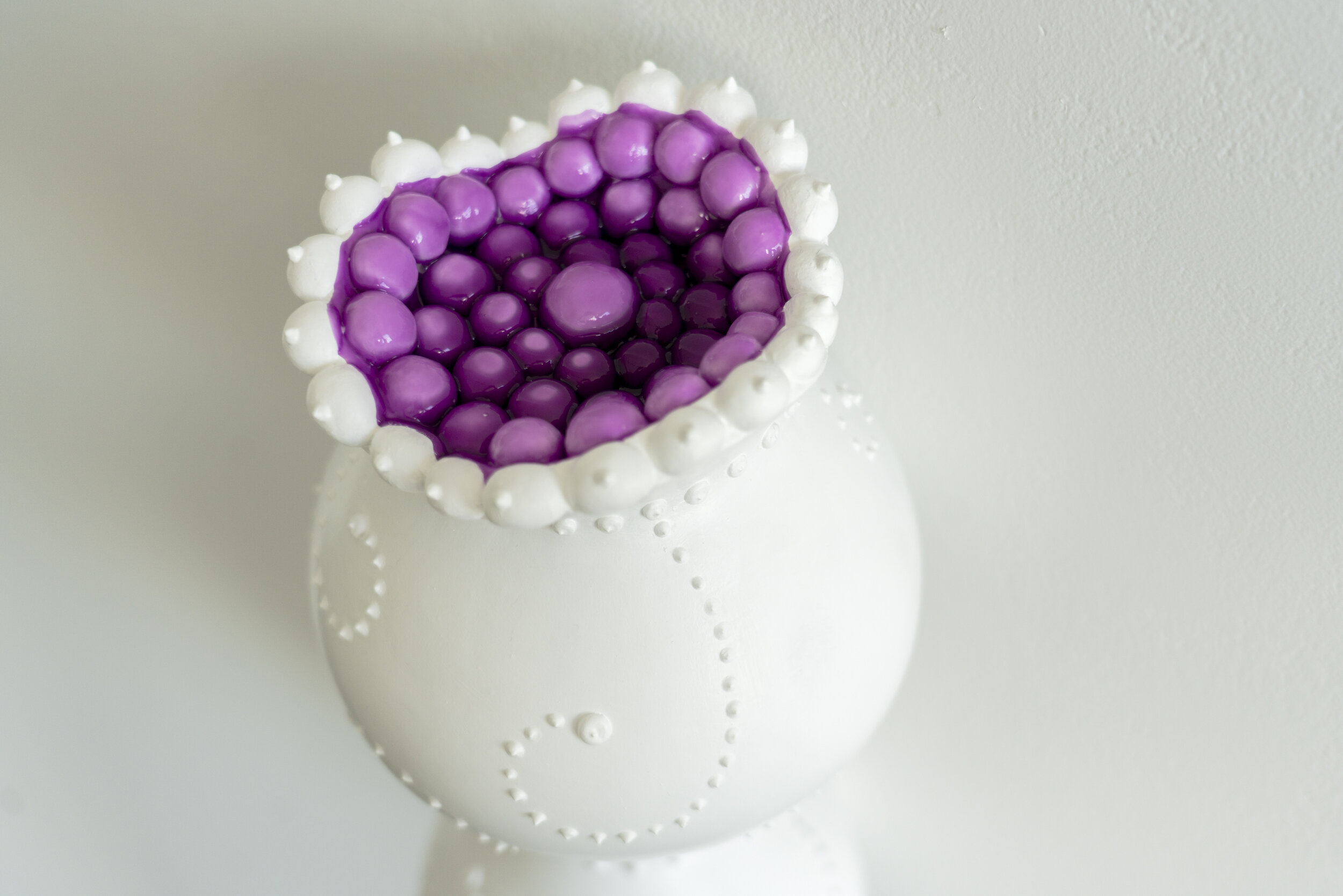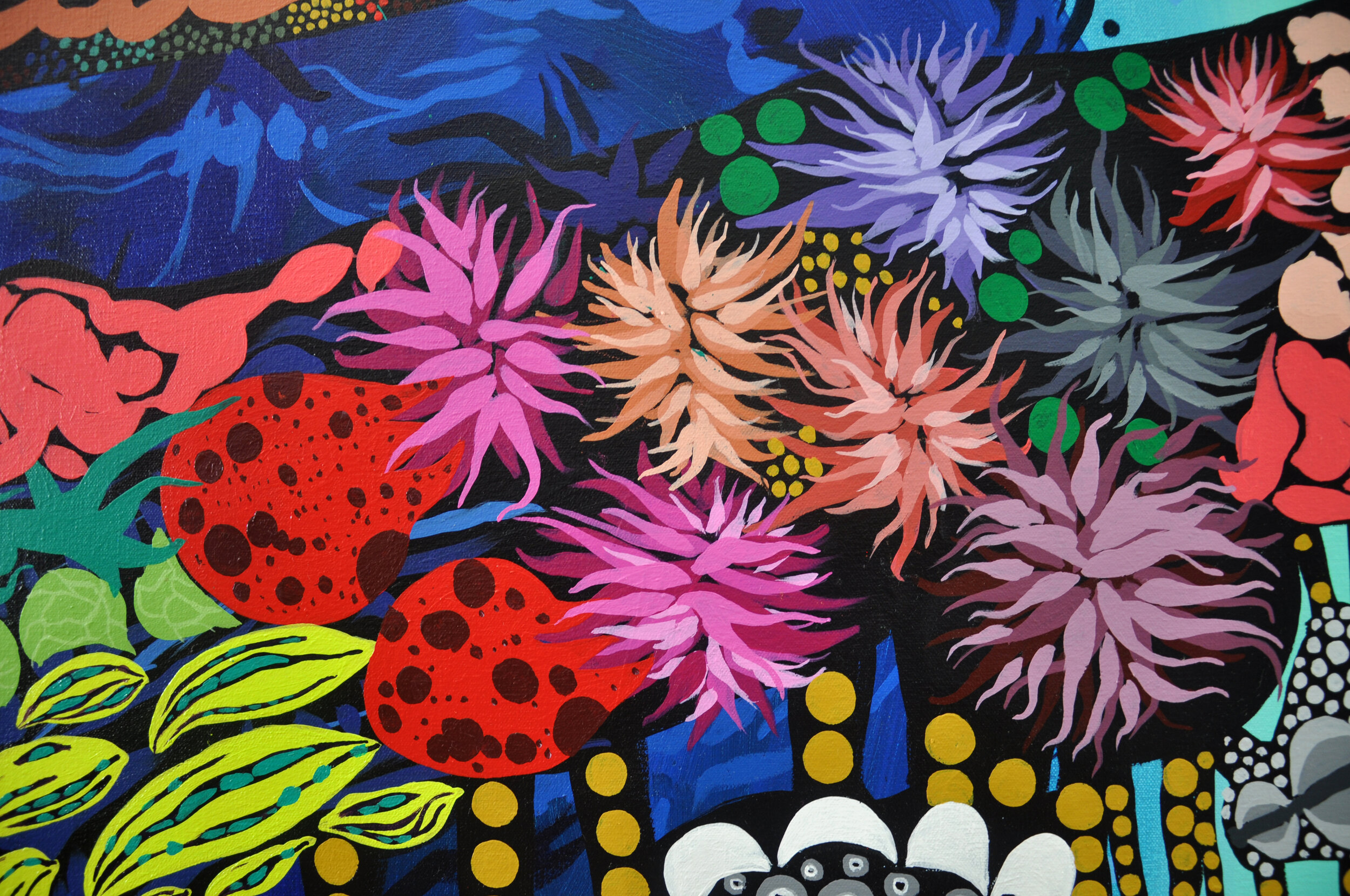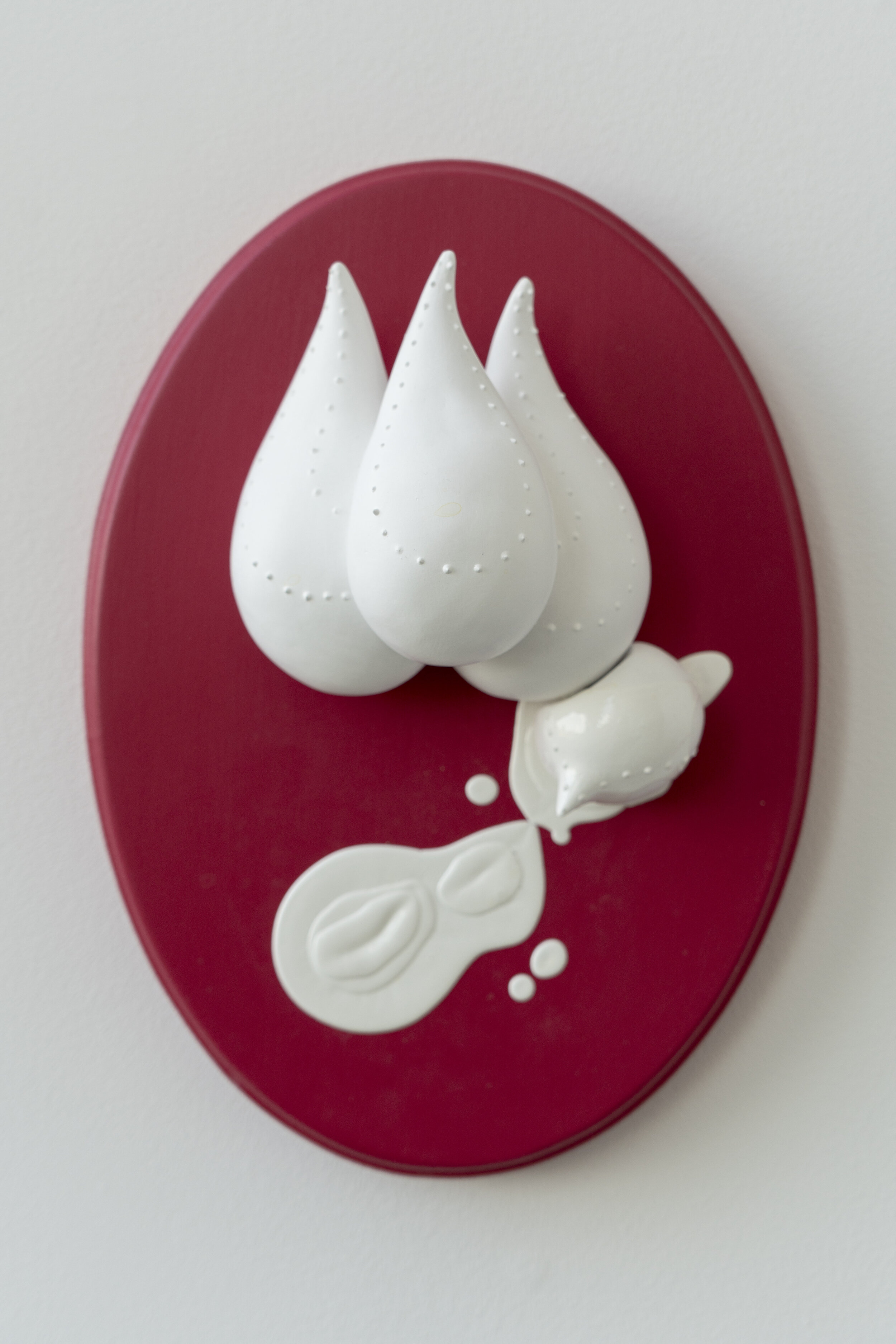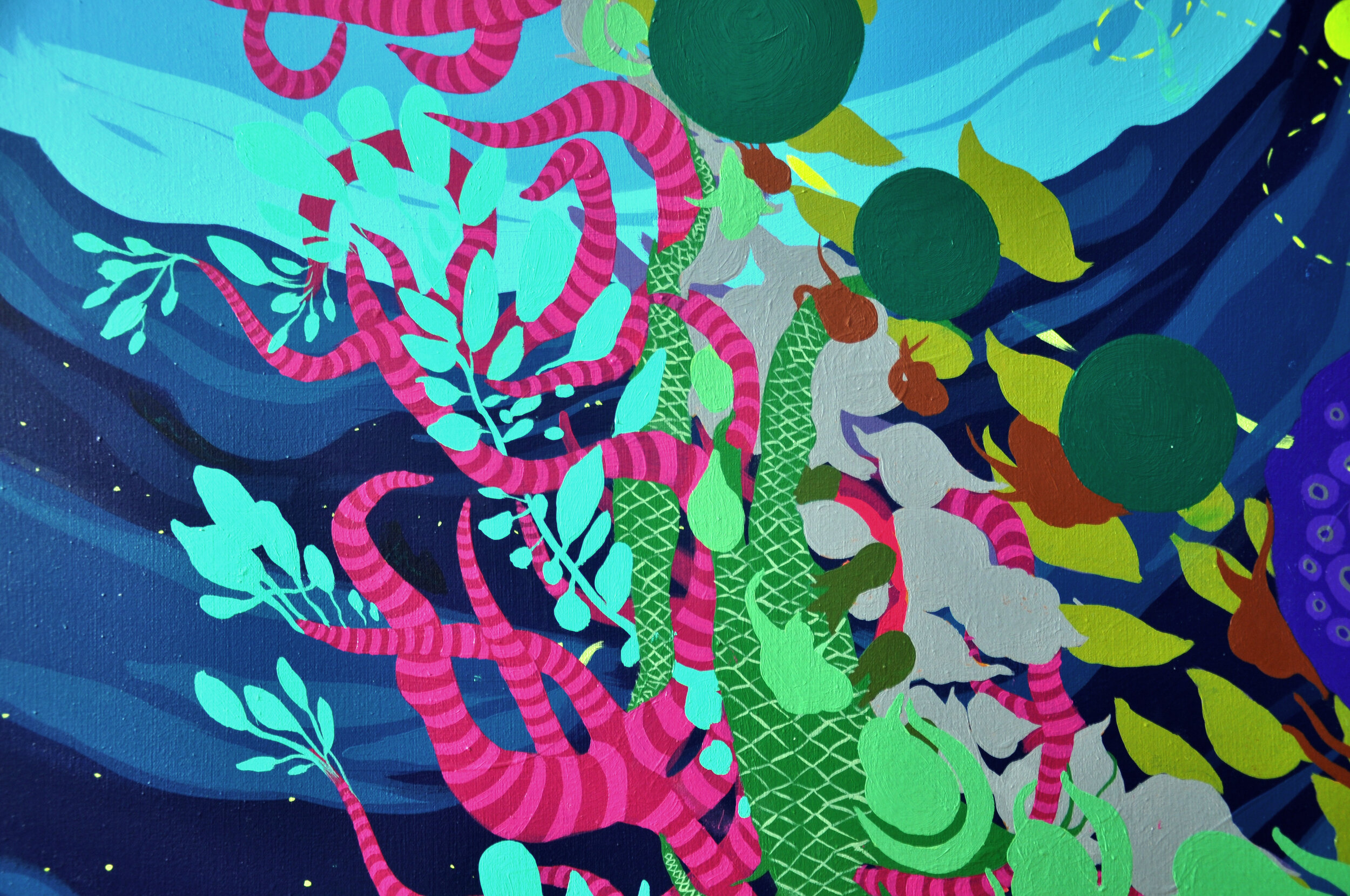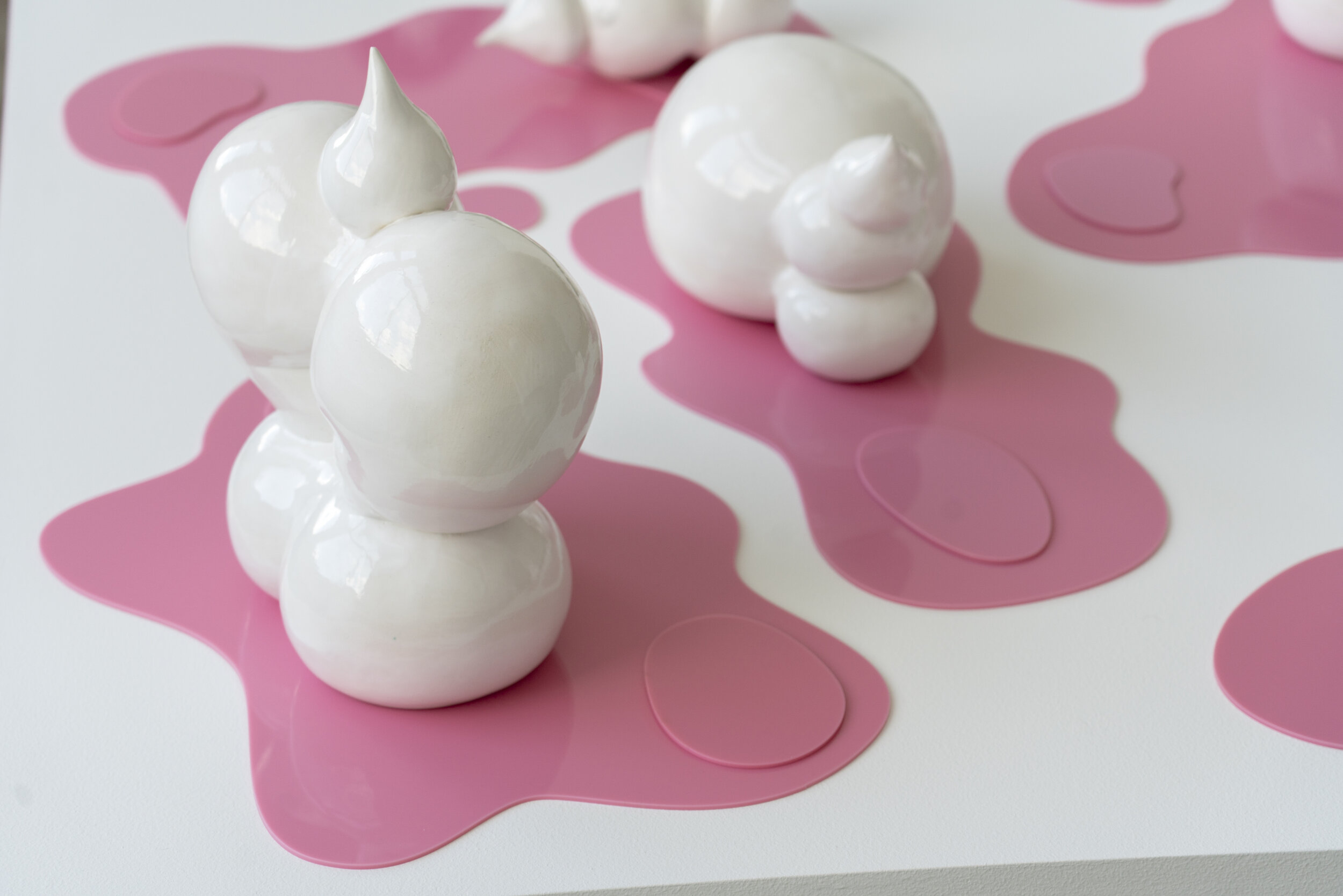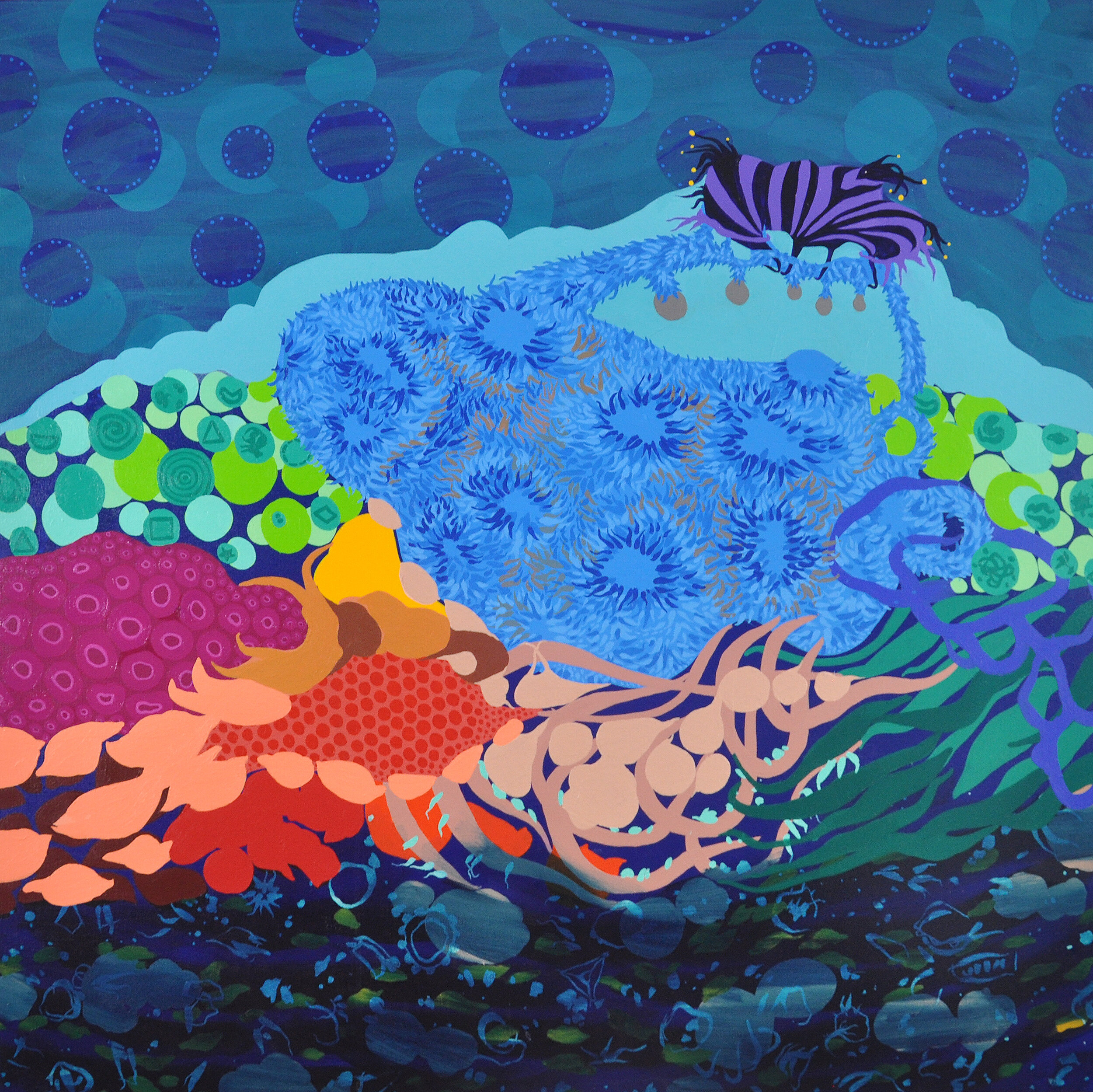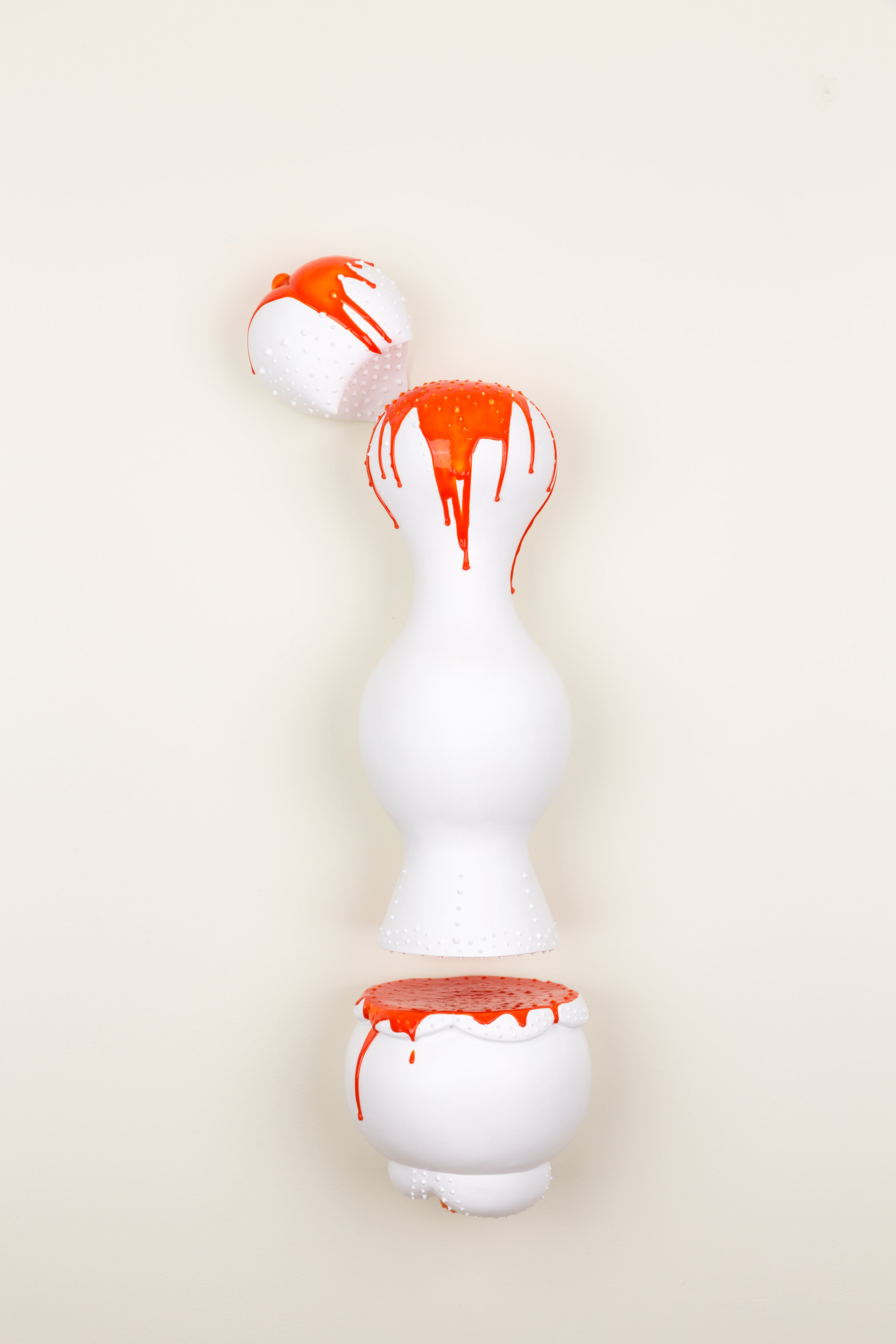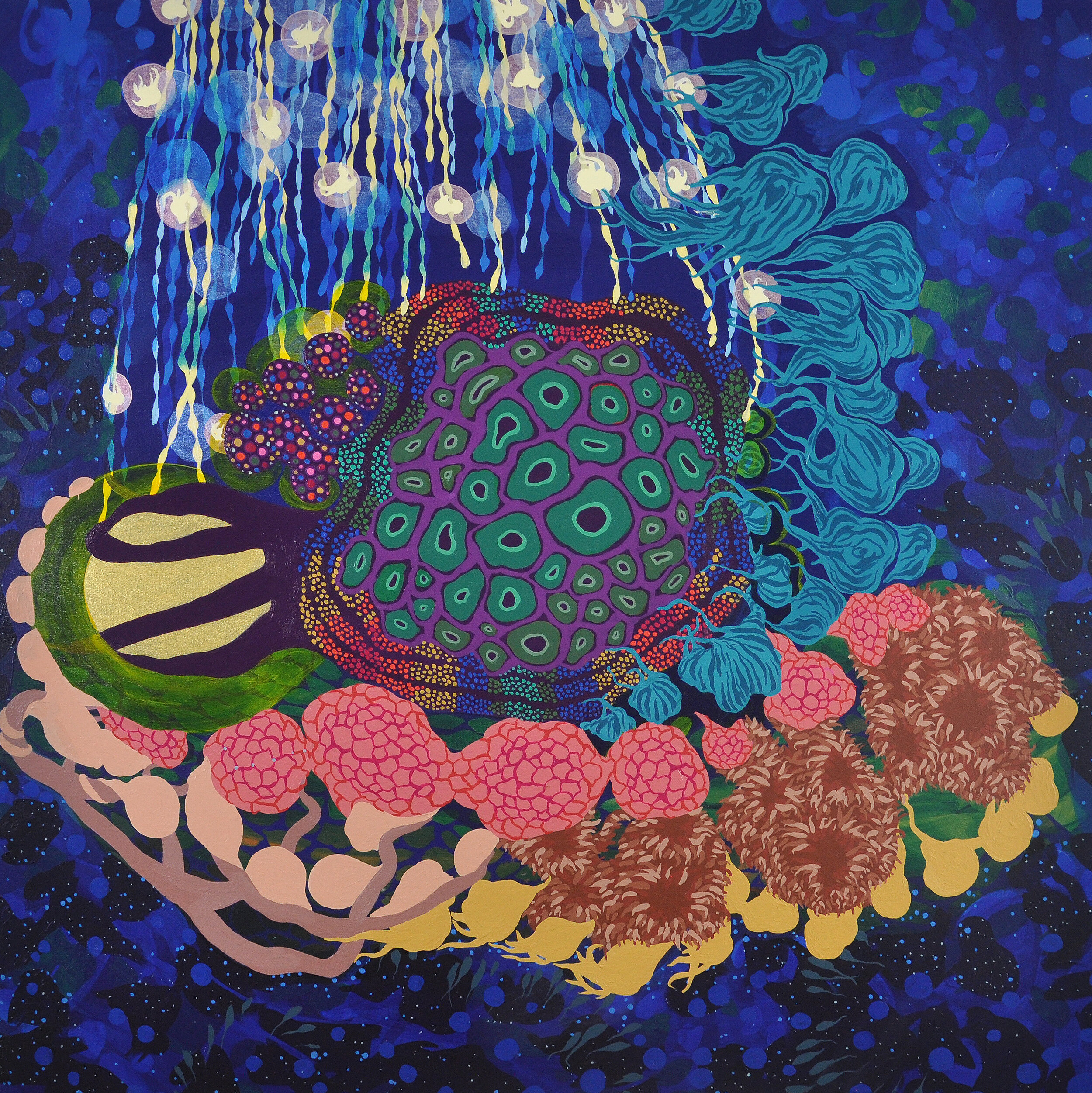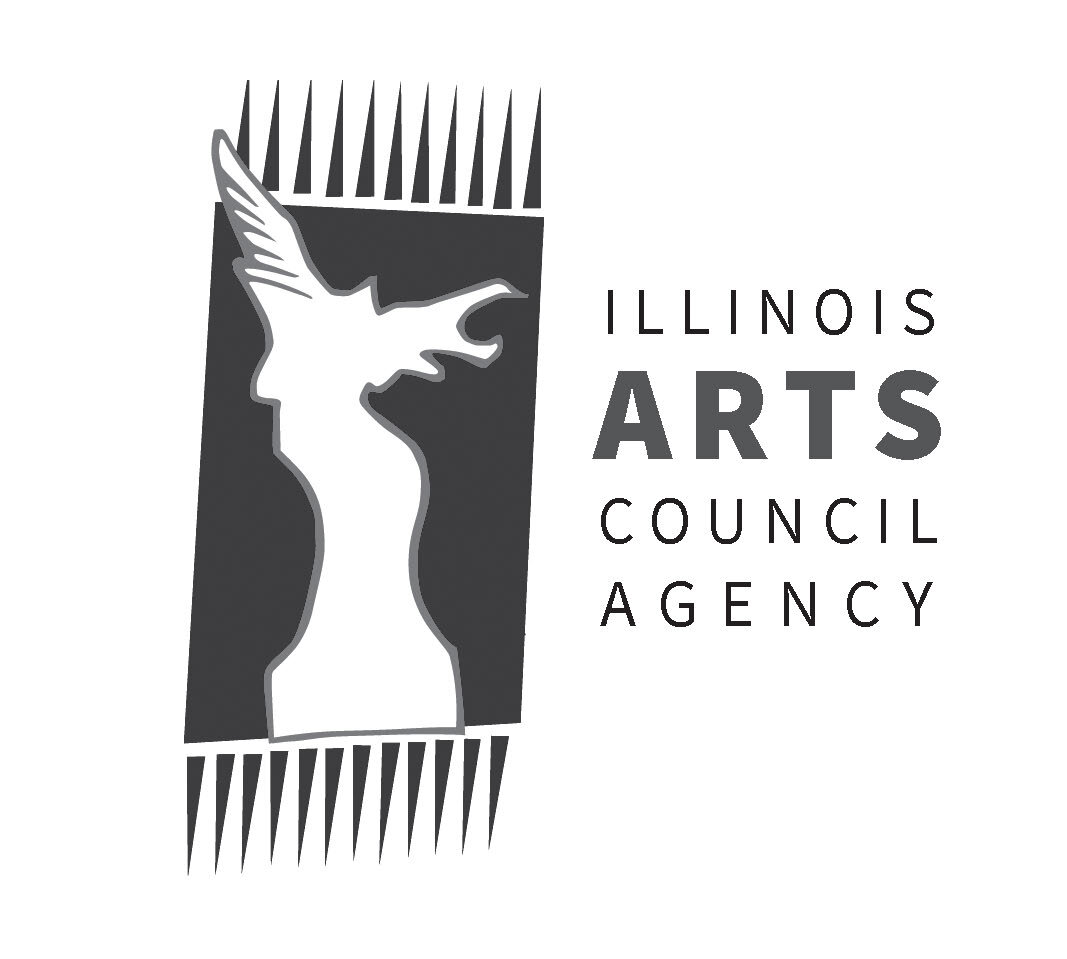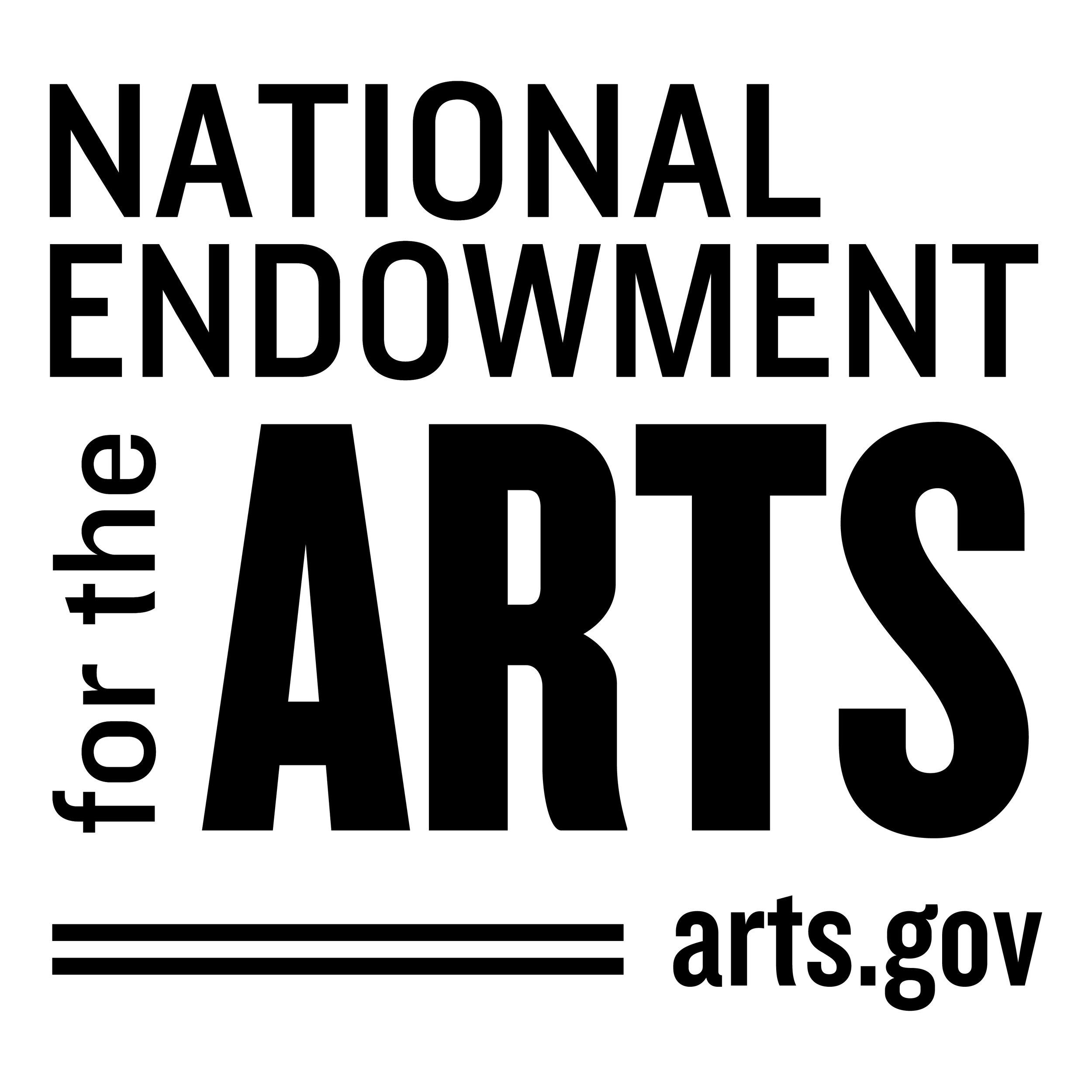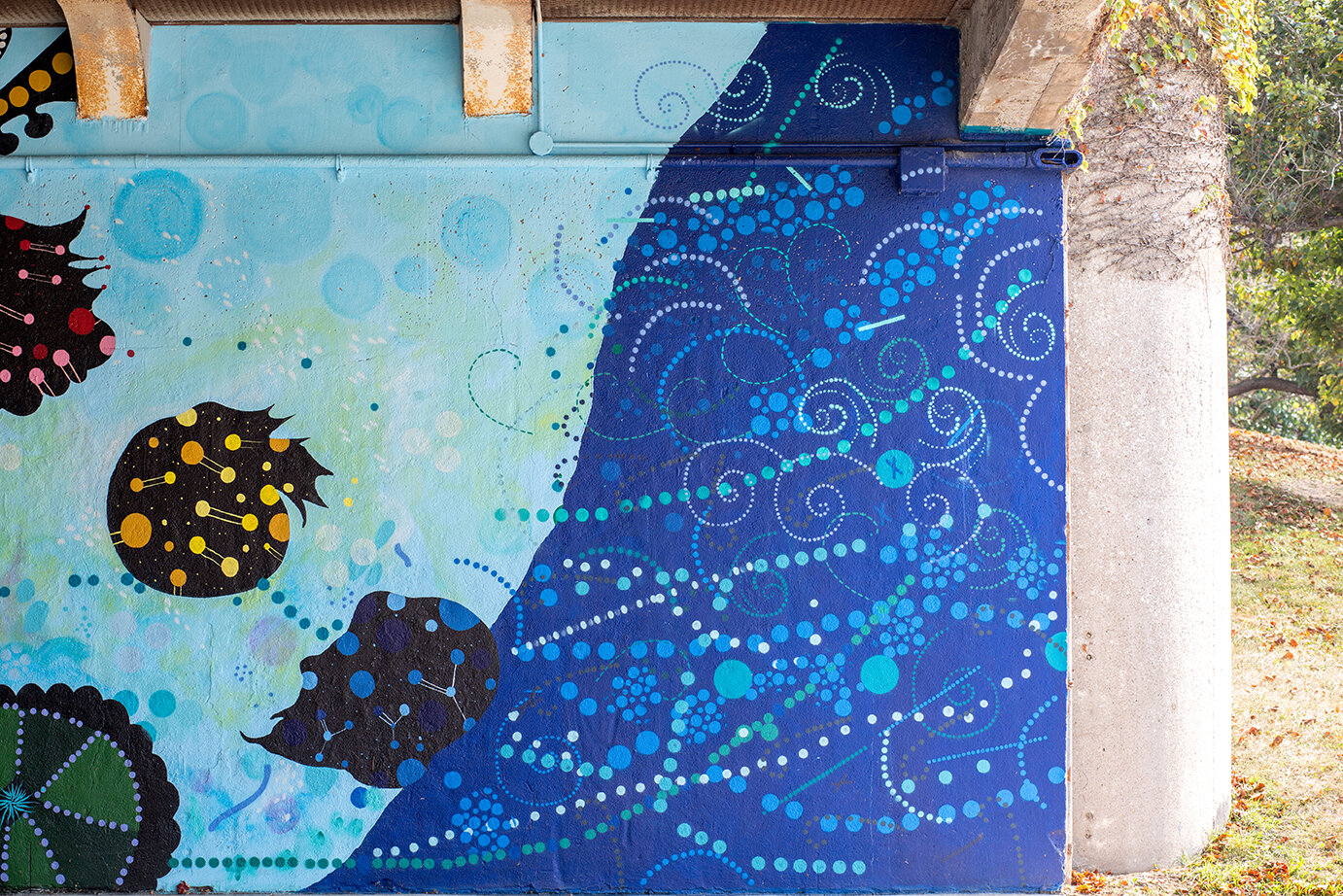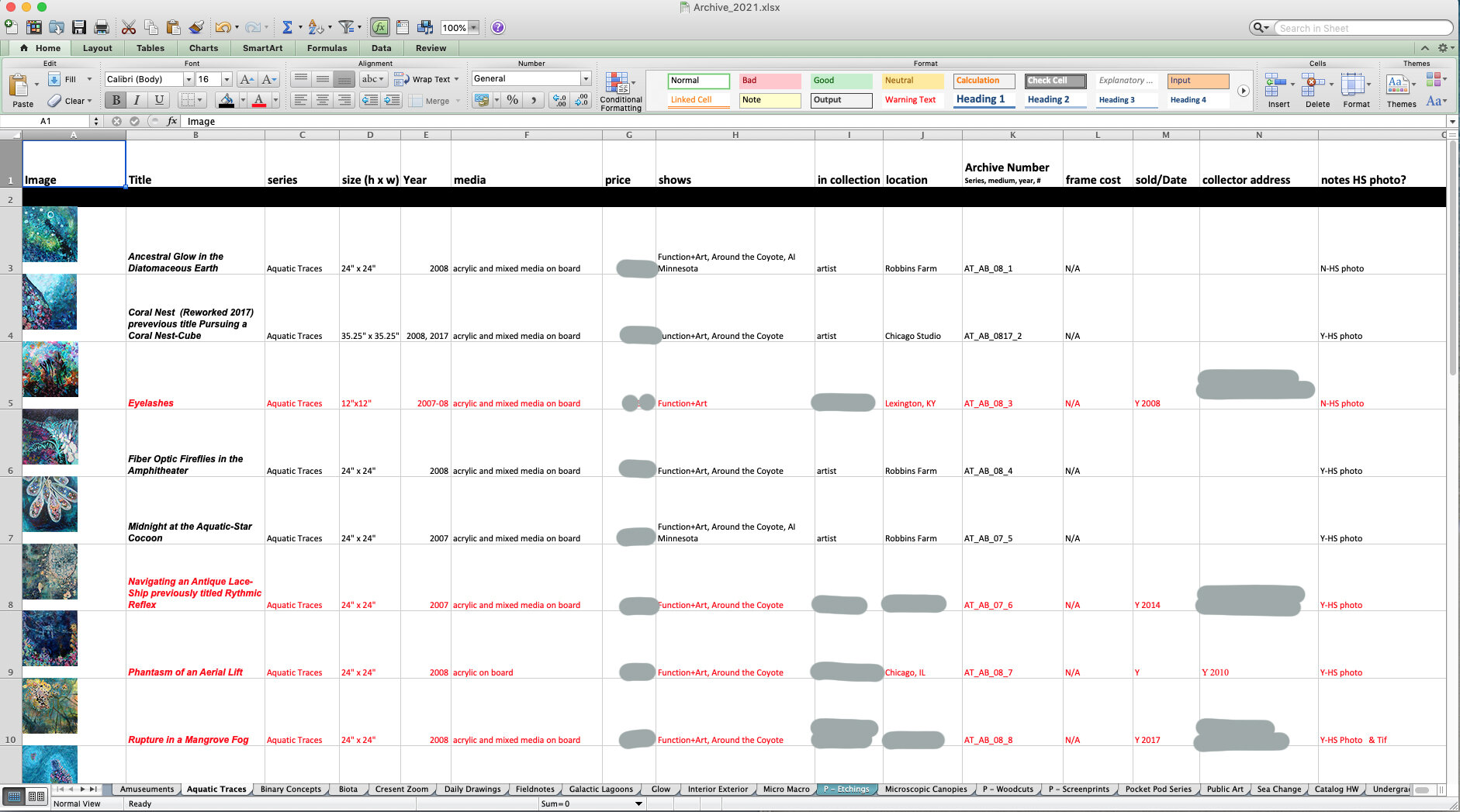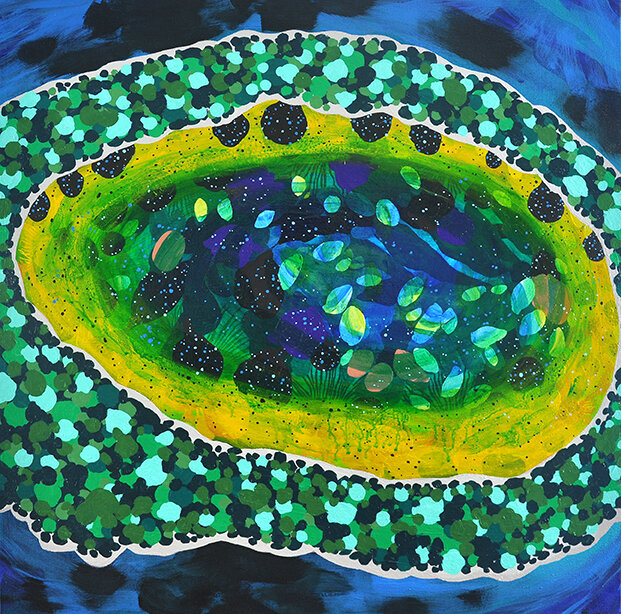Colorful exhibition Boom Bloom
opens at Krasl Art Center this Spring
Female duo presents color-saturated art, inspiring spring programs in-person and online.
ST. JOSEPH, MICHIGAN- Krasl Art Center (KAC) welcomes a new exhibition to southwest Michigan this spring. Between April 3 - June 6, 2021, visitors are invited to experience Boom Bloom, featuring Nikki Renee Anderson and Renee Robbins in KAC’s main gallery. Exhibitions are free and open to the public Friday, Saturday, Sunday and Monday 11 AM - 5 PM, with virtual and in-person programming planned on Facebook and Zoom.
Renee Robbins, Siren Song, 48" x 72", acrylic on canvas, 2019.
Krasl Art Center’s main galleries will welcome Boom Bloom, featuring sculptures by Nikki Renee Anderson (Chicago) and paintings by Renee Robbins (Chicago) that explode, reconfigure, and blossom on April 3. United in form, their works employ organic shapes and bright, bold colors. In addition, both artists draw on real objects and lived experiences to create something beyond. Sculptures by Anderson recall childhood memories - like watching her father bake - while inventing new forms that explore the feminine experience. The soft rolls of her sculptures might just as easily evoke a pastry as the human body. Similarly, Robbins studies cells, stars, and the natural world in between to inform the new worlds she paints. Her paintings shift between recognizable flora to completely original biomorphic landscapes.
Biomorphic compositions multiply, shift, and drip inside a candy colored otherworld. Themes of growth connect the works in rhythmic blooms at either the beginning or the end of natural cycles. Hybrid forms simultaneously evoke so many different things such as cells, botanicals, or the human body. While drawing from the familiar, invention and a whimsical sense of play characterize the work. The ornamentation and saturated colors present ideas to lure, entice, and attract. The artworks consider standards of beauty, impermanence, and notions of femininity through a push-pull tension. Layers of attraction and repulsion manifest on the micro and macro scale in tandem like a daydream.
ABOUT THE ARTISTS:
Nikki Renee Anderson lives and works in Chicago, IL. She has exhibited extensively including recent exhibitions at the Chicago Cultural Center, Hyde Park Art Center, The Gaylord and Dorothy Donnelly Foundation, Glass Curtain Gallery and The Grounds For Sculpture. Anderson’s work has been reviewed in many publications such as the New York Times, the Chicago Tribune, Sculpture Magazine, Ceramics Art and Perception and American Craft Magazine. She received an MFA from Stony Brook University and a BFA from Drake University. She is a full time faculty member at Harper College where she runs the Ceramics program.
Renee Robbins is a Chicago-based visual artist who layers biomorphic forms to create detailed otherworldly environments. She has been awarded public art commissions with the Chicago Public Art Group, Wabash Arts Corridor, and Illinois’ Art-In-Architecture Program. She has exhibited widely, including exhibitions at The Peggy Notebaert Nature Museum, Chicago, IL; Lois Lambert Gallery, Santa Monica, CA; Fermi National Accelerator Laboratory, Batavia, IL; and the Alden B Dow Museum of Science and Art, Midland, MI. Robbins received her MFA from Michigan State University.
ABOUT THE CENTER: Krasl Art Center is a nonprofit art museum and learning center that enriches the lives of people living in or visiting Southwest Michigan by delivering enlightening art experiences through diverse education opportunities, meaningful events, and high quality exhibits and collections. KAC’s mission is to inspire meaningful change and strengthen community through the visual arts. To learn more, visit krasl.org.
EXHIBITION PROGRAMMING:
ARTIST TALK WITH NIKKI RENEE ANDERSON & RENEE ROBBINS
SATURDAY, MAY 8, 1 - 2PM EST
Free, In-Person and Virtual Event on Zoom; Register in advance at krasl.org
Join the artists in KAC’s galleries to learn about their inspiration, process, and the connections between their work.
LIVE AT LUNCHTIME FOCUS TALKS EVERY THURSDAY AT NOON EST
Free Virtual Event Live on KAC’s Facebook Page
Of special note:
APRIL 8: VIRTUAL COFFEE WITH THE CURATOR
APRIL 15: NIKKI RENEE ANDERSON
APRIL 22: EARTH DAY CELEBRATION
APRIL 29: RENEE ROBBINS
Krasl Art Center will offer different virtual and in-person programs for these exhibitions. Live at Lunchtime Focus Talks occur every Thursday at Noon on Facebook Live and offer insights from artists about the work on view at KAC and within our community. Some of the topics for these exhibitions include Coffee with the Curator (April 8), Nikki Renee Anderson (April 15), Earth Day Celebration (April 22), and Renee Robbins (April 29).
Learn about the artists’ inspiration, process, and the connections between the two Boom Bloom creators during a Hybrid Artist Talk on Saturday, May 8 at 1 PM. Guests will have the opportunity to register in advance for a discussion with Anderson and Robbins in KAC’s galleries - or stream the lecture from home via Zoom.
The community is also invited to register for KAC’s Third Thursday virtual series in April and May. Celebrate National Garden Month on April 15 at 7 PM with experts as we ‘dig deeper’ on the topic of gardening. Then on May 20 at 7 PM, join KAC Deputy Director and Curator, Tami Miller, on Zoom for a live tour from artlab artist Mike Slaski’s studio. Learn more about the artist and his process, see additional work, and ask questions during this virtual evening event. Register for either event at krasl.org/art/program registration.
On the Second Saturday of April and May from 11 AM - 12:30 PM, join KAC for Boom Bloom- themed virtual Family Days. Information on these free, virtual events and how to register can be found at krasl.org/education/free-and-fun. Join KAC on April 10 for Painted Abstract Sculptures inspired by Nikki Renee Anderson and on May 8 for Water Bears and Watercolors, Art inspired by Science and Renee Robbins.
Information and registration information for all of KAC’s programs can be found at krasl.org.
Robbins’ artworks are partially supported by a 2021 Individual Artist Support grant from the Illinois Arts Council Agency through federal funds provided by the National Endowment for the Arts.
Robbins’ artworks also partially supported by a 2021 Individual Artist Program Grant from the City of Chicago Department of Cultural Affairs & Special Events, as well as a grant from the Illinois Arts Council Agency, a state agency through federal funds provided by the National Endowment for the Arts.

